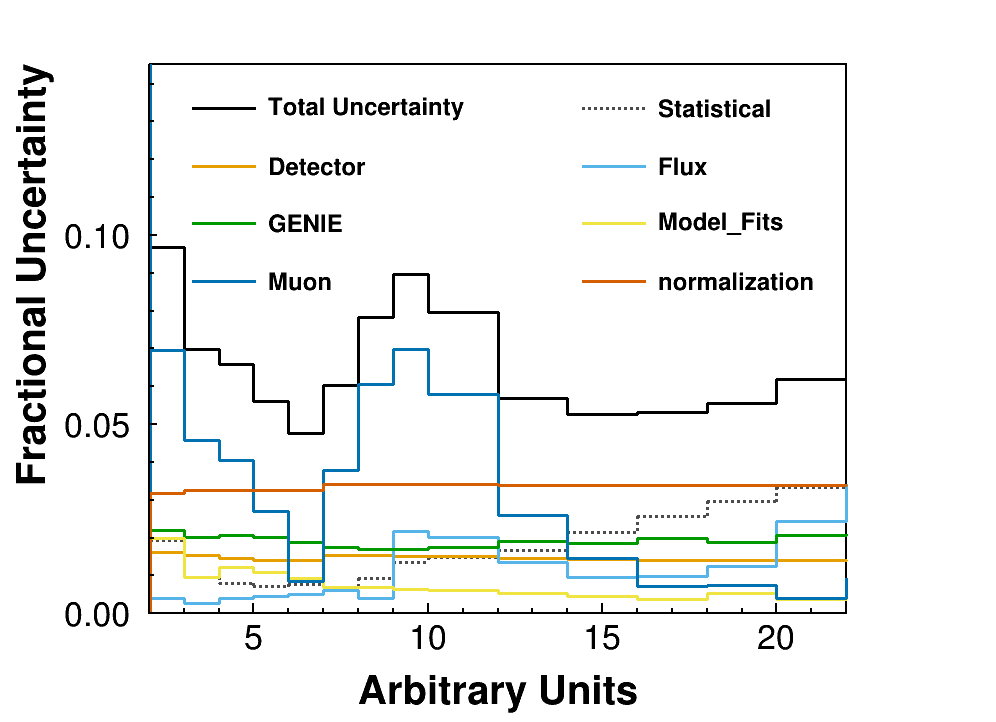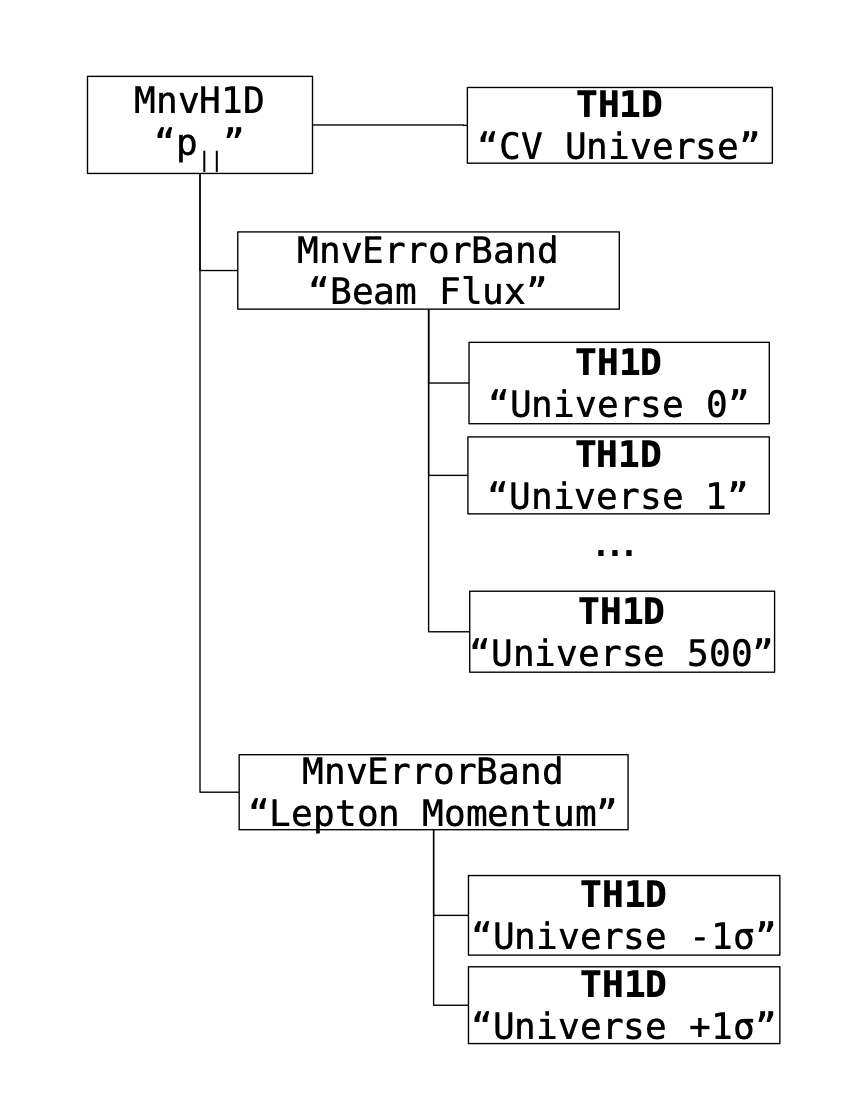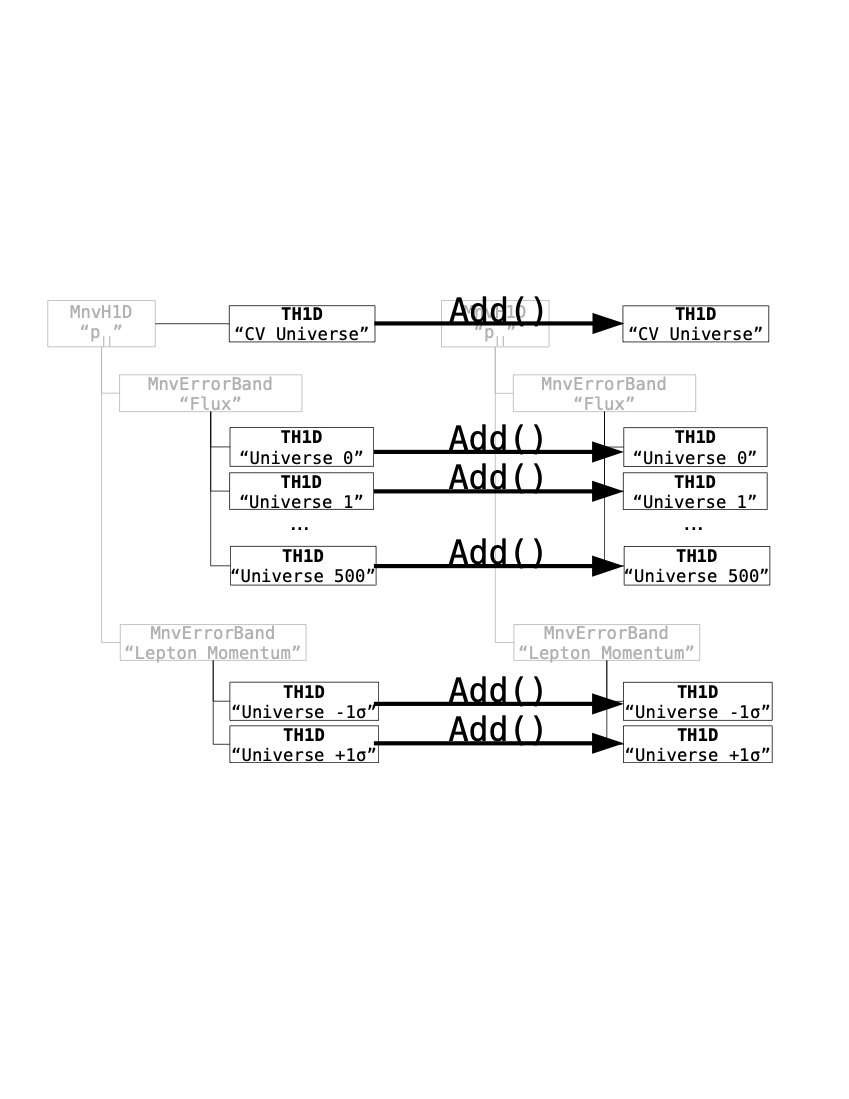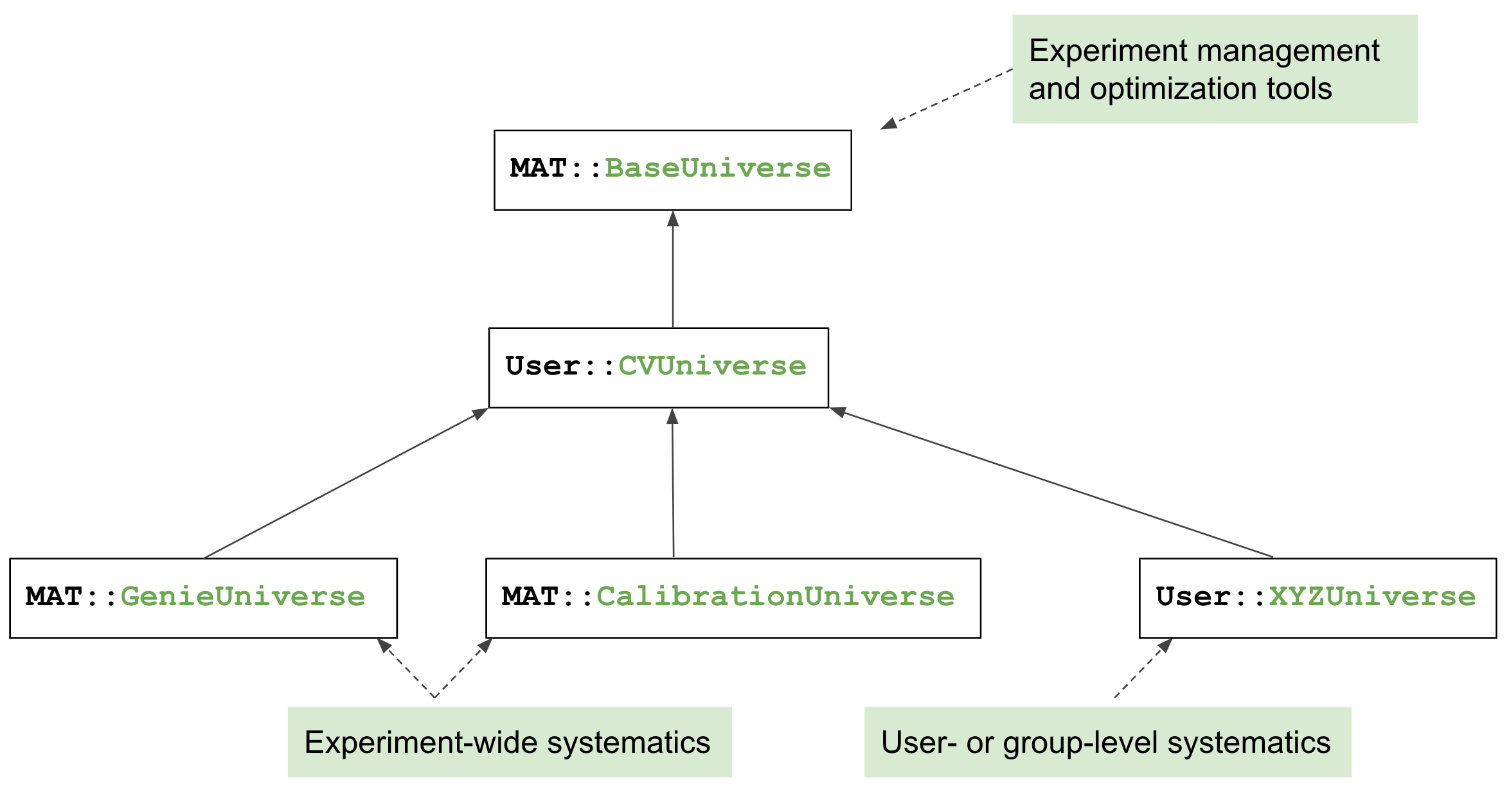MINERvA Analysis Toolkit
systematic uncertainties software for particle physics
The MAT is an error analyis software toolkit for particle physics data analysis that I designed and built as a member of the MINERvA Experiment.
The MAT is a flexible and powerful set of software tools to centralize, calculate, and visualize systematic uncertainties in particle physics analyses.
-
Implemented in c++ and python.
-
Use tools à la carte or as a complete error analysis prescription.
-
Extensible and flexible for an arbitrary level of experiment and user customization.
-
Provides experiment-level control and standardization of systematics, interfaces, and calculations.
-
Transparent user interface to lower the barrier to entry for new analyzers.
-
The foundation for MINERvA’s latest results and our data preservation project.
Data Visualization


hist -> DrawErrorSummary(); // [left]
errMatrix = hist -> GetCorrelationMatrix ();
errMatrix.Draw (); // [ right ]
The MnvHnD, a powerful histogram container class


Uncertainties processed in a single event record loop
double PassesCuts(const ExampleUniverse& univ) {
return univ.GetLeptonEnergy() < 20;
}
MnvH1D energyHistogram(systematics);
for(const auto& event: eventRecord) {
for(const ExampleUniverse& univ: systematics) {
if(PassesCuts(univ)) {
const double energy = univ.GetLeptonEnergy();
const double weight = univ.GetWeight();
energyHistogram.FillUniverse(univ, energy, weight);
}
}
}
Systematic Universe classes modularly implement many-universe error analysis

class ExampleUniverse: public BaseUniverse
{
public:
//Constructor and destructor details...
virtual double GetLeptonEnergy() const {
return m_tree->Get("lepton_energy");
}
virtual double GetWeight() const {
return 1;
}
private:
TreeWrapper* m_tree;
};
template <class UNIVERSE>
class CalibrationLeptonEnergyUniverse: public UNIVERSE
{
public:
//Constructors to match UNIVERSE
double GetLeptonEnergy() const override {
return UNIVERSE::GetLeptonEnergy() + 50; //MeV
}
};
Motivation
Uncertainty evaluation in HEP is complex and extremely important, but there are no community-standard tools.
Experiments are getting bigger, and flexible analysis systems are increasly important for maximizing physics output.
The MAT lowers the software barrier to entry for analyzers allowing users to spend less time writing code and more time thinking about physics.
Acknowledgments
I designed and built the Universe system, upgraded the MnvHnD object to use Universes (I am not the original author of the MnvHnD), and was a principle devloper of toolkit as a whole (including most of its other unlisted bells and whistles), all on behalf of the MINERvA collaboration. I worked with several awesome MINERvA colleagues along the way, and now the toolkit is mostly maintained interally by MINERvAns.